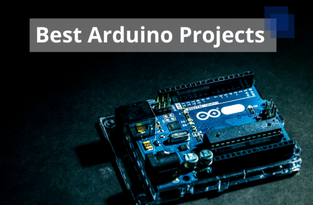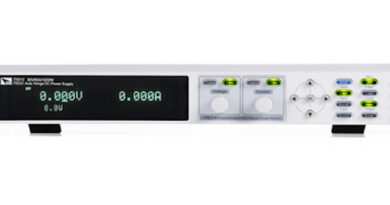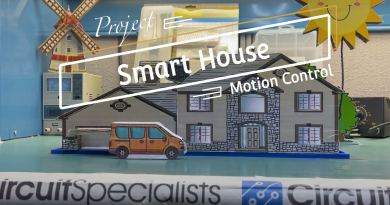How To Build A Guitar Pedal
Today I’m going to teach you how to build a TS808 guitar pedal, here is a quick step-by-step guide, for more detail and a full parts list keep reading below.
- Arrange all the electronic parts carefully on a 20 hole perfboard.
- Carefully solder the electronics to the perfboard.
- Next, drill 1/4 inch holes in either side of the body and wire up the body to the 1/4 inch input and output jacks.
- Drill a hole for the 5V power supply jack, or mount a 5V battery inside the body.
- Drill a hole in the top of the body for the switch.
- Paint the body.
- Mount the perfboard, battery and switch in the housing, using epoxy or hot glue.
- Secure the 1/4 inch input and output jacks to the housing and close it up.
- Shred.
For the last month my friend has been begging me to build him a TS808 clone. If you do not know what a TS808 is, it is a very popular (and somewhat simple) distortion pedal. So I did what I always do when I start a project, I looked it up on google. As it turns out, the DIY guitar pedal community is huge! A lot of people agreed that the TS808 was a great beginners pedal build, and in my opinion guitar pedals are great intro to circuitry. So if you’re just starting out and don’t want to build the classic rc car or clock that everyone has to make in the engineering 101 college class, then this may just be your project.
After getting all the schematics and parts lists together I went on the hunt for my supplies. Of course Circuit Specialists had about 99% of the parts, the only parts I had to hunt down was the 1/4” audio jacks (you’ll need two), a two pin foot switch. I picked them up from my local guitar center. Those two parts were the only ones I could not find at Circuit Specialists and if that changes ill update the blog with the new parts list. All the parts were really easy to find/order, and I managed to get everything I needed in about 3 days. In terms of the parts I personally used I deviated a little bit (because why make my own if I cant mod it?). But the parts that I listed is the classic ts808 clone. All the parts together ended up running me about 30 bucks. Considering retail of a TS808 is $180 I thought this was pretty good deal.
Now lets get down to the build. I started out with a little 20 hole perfboard and started figuring out where to lay everything. I put the ICS smack in the middle because, from the schematics, everything else seems to be equal on each corresponding side of the ics. I’ve uploaded pictures so you could tell where everything is at on my board. With the 20 hole perfboard I was able to fit everything on it perfectly. I recommend, if you wanna upgrade and add things, to buy a bigger perfboard. Remember if you upgrade the size then you have to upgrade the size of the pedal housing. In terms of soldering, any of our soldering irons we sell would work well for putting together perfboards, there is also a PCB schematic you can make. Etching a pcb is actually surprisingly easy, and makes everything much easier when putting it together. We sell the pcb kit if you would rather etch your pcb. Another benefit of a pcb is that it’ll look much prettier. You can see my board kind of looks like a Frankenstein of weird parts and oddly put together. You wont get that issue with a pcb. I personally just followed the PCB schematics for the board because it seemed like good placement, and it made everything a bit easier.
Once I finished the soldering of the board I start on wiring up the body. For this you will need a drill. I found it easier to use a drill press, but I have no doubt a normal drill can do this. Since we’re using a 1/4” jack use a 1/4” drill bit. Drill on each side of the case, I like to not make the holes line up. Why? because, especially in the smaller cases, the jacks will touch each other. This is especially true in the smaller 1590a cases that you might start using soon. Now, you can either find a jack for the 5v power supply, and then drill the hole for it, or you can use a 5v battery, I chose the battery because I have the room for it in the case. After that simply drill a hole on the top for your switch. Before putting everything on, paint it. This is where you can do pretty much whatever you want, from multiple coats of airbrush, to some spray paint, it doesn’t really matter.
After all this is done, put your components inside. Most people tend to fasten it with an epoxy or super glue. This will help prevent shorts, as well as just keep everything neat. Ill personally be adding the epoxy before I give it to my friend. I’m quite new to these types of projects so it took me about 20-30 hours to finish. However, I learned a bunch in the process and it was an extremely fun and rewarding project.
Parts List:
- x2 23BK410 https://www.circuitspecialists.com/23bk410.html
- CK05333K https://www.circuitspecialists.com/ck05333k.html
- 21ET050 https://www.circuitspecialists.com/21et050.html
- DM10-500J https://www.circuitspecialists.com/dm10-500j.html
- 23PP422 https://www.circuitspecialists.com/23pp422.html
- 23PP410 https://www.circuitspecialists.com/23pp410.html
- CEM25-0010 https://www.circuitspecialists.com/cem25-0010.html
- x2 21ET100 https://www.circuitspecialists.com/21et100.html
- CEM50-0001 https://www.circuitspecialists.com/cem50-0001.html
- CEM25-0047 https://www.circuitspecialists.com/cem25-0047.html
- TAC002 https://www.circuitspecialists.com/tac002.html
- 23BK333 https://www.circuitspecialists.com/23bk333.html
- MC4558 https://www.circuitspecialists.com/mc4558cp1.html
- x2 2N3904 https://www.circuitspecialists.com/2n3904.html
- x31N914 https://www.circuitspecialists.com/1n914.html
- x7 RA10K https://www.circuitspecialists.com/ra10k.html
- x4 RD1K https://www.circuitspecialists.com/rd1k.html
- x2 RA510K https://www.circuitspecialists.com/ra510k.html
- RA4.7K https://www.circuitspecialists.com/ra4.7k.html
- RA51K https://www.circuitspecialists.com/ra51k.html
- RA220 https://www.circuitspecialists.com/ra220.html
- RA1.0M https://www.circuitspecialists.com/ra1.0m.html
- 31VJ505 https://www.circuitspecialists.com/31vj505.html
- 31VA501 https://www.circuitspecialists.com/31va501.html
- 31VA403 https://www.circuitspecialists.com/31va403.html
- 1590N https://www.circuitspecialists.com/die-cast-aluminum-enclosure-1590n.html
What instruments I used for this project:
- BNDL150 https://www.circuitspecialists.com/CSI-PREMIER-75W-Soldering-Station-Kit.html
- DSO5102B https://www.circuitspecialists.com/digital-storage-oscilloscope-dso5102b.html
- SDG810 https://www.circuitspecialists.com/10MHz-Arbitrary-Function-Generator-SDG810.html
- You don’t necessarily need all this equipment, The only thing you definitely need is the soldering iron. The function generator and Oscope were, however, extremely helpful. The first picture you see below was how i confirmed the distortion pedal was working properly. As I moved the Potentiometers, the distortion wave changed.


